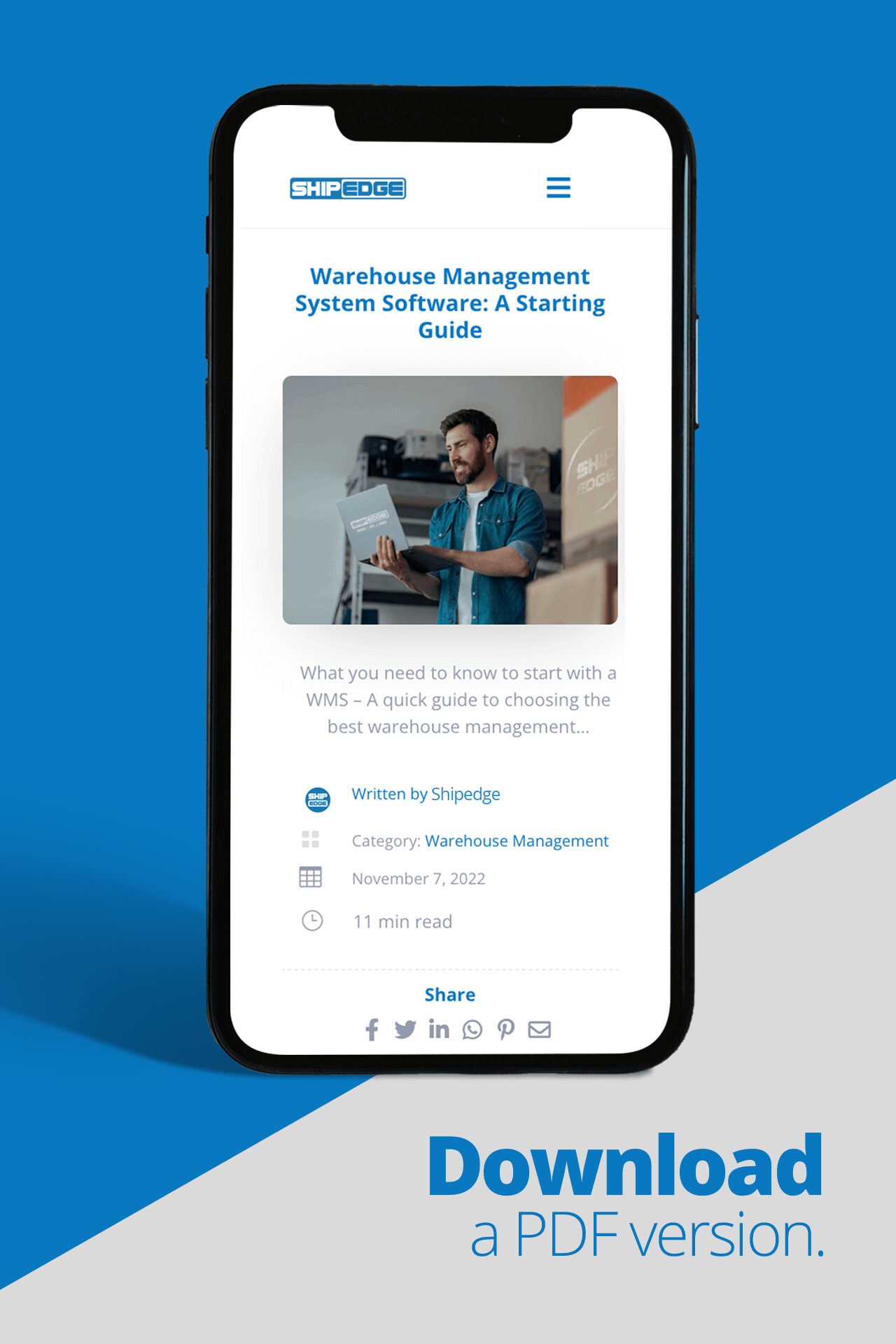In the fast-paced realm of e-commerce, the term “cart abandonment” carries significant weight. It’s a concept that haunts the dreams of online retailers and represents a challenge that can make or break the success of their businesses. Picture this scenario: a potential customer visits your online store, browses through your products, adds items to their virtual shopping cart, and when you think you’ve sealed the deal, they exit the website without purchasing. This phenomenon is what we refer to as “cart abandonment.”
In this article, we will present the intricacies of cart abandonment, exploring its definition, calculation, and the main reasons behind it. We will also unveil comprehensive strategies to reduce cart abandonment rates. Additionally, we will highlight how innovative shipping tools, such as those offered by Shipedge, can play a pivotal role in combating cart abandonment by providing e-commerce businesses with the necessary shipping solutions to improve customer contentment and increase conversion rates. So, let’s embark on this journey to unravel the mysteries of cart abandonment and discover the keys to a more successful e-commerce venture.
What is cart abandonment?
Cart abandonment occurs when online shoppers add items to their virtual shopping carts, but exit visits the website without initiating a purchase or finalizing the transaction.
This issue of cart abandonment has been a persistent concern for e-commerce businesses for quite some time. These occurrences tend to spike during holidays and festive seasons when competition for consumer attention intensifies.
While recovering every abandoned cart may not be possible, there’s some positive news: with effective strategies and gentle encouragement, many customers can be enticed to return, potentially offsetting lost sales.
The cart abandonment rate is a critical metric for e-commerce enterprises to monitor. It strongly correlates with customer conversion rates and overall revenue. A high cart abandonment rate typically signals challenges in the checkout process or issues with the overall customer experience.
Understanding cart abandonment and its associated metrics is essential for e-commerce enterprises.

How do you calculate the cart abandonment rate?
The cart abandonment rate represents the portion of online shoppers who place products in their virtual shopping carts but depart the website without finalizing their purchases. It signifies the rate at which potential customers initially express interest in exiting without purchasing compared to the overall number of shopping carts generated.
To compute the cart abandonment rate:
1 – Calculate the ratio of completed purchases to the total number of created shopping carts.
2 – Subtract this ratio from one (1), then multiply the result by one hundred (100) to express it as a percentage.
As an illustration, suppose 500 shopping carts are generated, and 100 are successfully converted into completed purchases.
Cart Abandonment Rate (calculation)
(100 purchases / 500 generated carts) = 0.20
(1 – 0.20) = 0.80
(0.80 x 100) = 80%
In this scenario, the cart abandonment rate would be 80%
Discover how our WMS can improve your business
What are the main reasons for cart abandonment?
Completely eradicating cart abandonment is not a realistic goal, but gaining insights into the factors that lead to abandonment can assist in addressing the issue to a certain degree. According to Shopify, several reasons can justify why people abandon during checkout, such as.
1 – Additional expenses are excessively elevated
More than half of online shoppers are most persuaded to purchase from an online store when offered free shipping, followed by coupons and discounts at 41%. It’s evident that cost plays a significant role for today’s shoppers, so it’s unsurprising that any additional charges applied during the checkout process are a prominent reason for cart abandonment.
Additional expenses, encompassing shipping fees, taxes, and other surcharges, are not always transparent to customers. When these fees are revealed in the online shopping cart, on top of the product prices, it prompts 49% of cart abandoners to leave.
2 – Account creation
New customers visiting your online store for the first time are seeking a quick and hassle-free checkout process. This becomes challenging when they are prompted to register for an account.
A considerable number of individuals leave their online shopping carts without completing a purchase due to the website’s insistence on them registering for an account.
Lengthy form fields, such as date of birth and phone number, are not crucial for completing an online purchase. Providing all this information for a single transaction can be exasperating for certain shoppers, so nearly a quarter (24%) of cart abandonment instances occur when the website requests them to register for an account.
Providing alternatives such as a guest checkout option or a streamlined checkout process that remembers the customer’s details can effectively address this issue for potential customers.
3 – Checkout takes too much time
In the United States (US), the checkout flow contains 23 form elements by default:
- Name
- Address
- Birthday
- Other popular fields
Although it can be rich information, especially for marketers and sellers that can collect good data from their clients, a big quest for information can have the opposite effect on their clients, who can abandon the process during the customer journey. Statistics from Shopify reveal that 18% of shoppers opt out of their purchases due to a protracted and intricate checkout process. Thus, finding the right balance between gathering useful information and ensuring a seamless customer experience is crucial for e-commerce success in the US market.
READ MORE: Great Strategies for Minimizing Fulfillment Errors in E-commerce
4 – Pricing was not transparent
Exorbitant shipping expenses are a primary driver of cart abandonment. Similarly, a significant portion (17%) of shoppers leave their carts behind due to the inability to ascertain the complete order cost at the outset.
Online shoppers often encounter additional charges, particularly when making international purchases. Factors such as import taxes and currency conversions all contribute to the decision-making process of whether purchasing from an online retailer is worthwhile.
Discover how our WMS can improve your business
5 – Website lacks credibility
According to Shopify, 17% of individuals abandon their online shopping carts due to concerns about the site’s trustworthiness with their credit card details.
- In 2020, nearly 1.4 million people in the US reported falling victim to identity theft. Given the submission of sensitive information like credit card numbers and home addresses during online checkout, it’s unsurprising that modern-day shoppers prioritize their privacy when making online purchases.
Installing an SSL certificate, featuring customer testimonials, and highlighting warranties on your e-commerce website can all be effective measures to address this issue.
READ MORE: The Importance of Guaranteeing Safety and Security Compliance in Warehouses
6 – Unforeseen shipping expenses
Nothing discourages shoppers more than encountering unexpected charges added during the checkout process.
Indeed, a study conducted by the Baymard Institute revealed that 48% of shoppers who genuinely intended to make a purchase (as opposed to mere browsing) abandoned their shopping carts due to excessive additional expenses, which included shipping fees, taxes, and other fees.
In an effort to rival Amazon, major retailers like Target, Walmart, and Best Buy have popularized the concept of free two-day shipping, setting a standard that customers now anticipate from other sellers.
READ MORE: Offering 2-Day Shipping: A Game-Changer for Your E-Commerce Business
So far, we’ve learned about some of the primary reasons that can lead a web user to give up on an online purchase, consequently abandoning their shopping cart. In the next stage, we will present some of the critical strategies that can be implemented to mitigate this issue for companies that invest in online sales.
How to decrease the shopping cart abandonment rate?
In the following sections, we will present some of the critical suggestions on how you can reduce the shopping cart abandonment rate.

1 – Provide guest checkout options
Allow customers to bypass the process of creating an account if they prefer.
This streamlines the checkout process by eliminating extra steps while providing those who are hesitant to share their personal details with the assurance they need to complete their purchase.
By offering a guest checkout option, customers are not required to save their credit card information, and their email address will solely be utilized for delivery notifications.
2 – Incorporate small images of the products at various stages of the checkout procedure
Customers sometimes place numerous items in their shopping carts and lose track of their selections. Alternatively, they may opt for a customizable product, for example, a shoe available in various colors and sizes, and wish to verify their chosen specifications.
Frequently, individuals remove the item from their cart, return to the product page for a thorough review of the specifications, and ultimately abandon their purchase. Incorporating a product image along with a concise summary of essential product details serves as a means of providing reassurance.
3 – Implement progress trackers on the checkout page
Progress bars are a valuable user interface feature as they inform users about the remaining steps in a user journey.
This fosters a feeling of forward momentum, reducing the chances of users abandoning the process due to an unnecessarily lengthy checkout procedure.
Furthermore, an almost-finished progress bar visually encourages shoppers to proceed with their purchase because it showcases the effort they’ve already invested in the checkout. Additionally, you can incorporate a straightforward shopping cart reminder or notification on your website.
For instance:
- If a customer places an item in their cart but doesn’t initiate checkout.
You can configure a pop-up message to remind them they haven’t completed their purchase.
4 – Be transparent about all costs
Avoid catching customers off guard with unanticipated taxes and charges during the checkout process, as it can lead to feelings of deception.
Instead, be transparent regarding shipping, handling, and tax fees.
Ideally, this information should be visible on the product page. Nonetheless, fees may vary based on the user’s geographic location or shipping address, so it’s crucial to promptly offer updated pricing details once the customer provides their shipping address.
If precision is impossible, consider providing a range for shipping costs before reaching the checkout stage.
For example:
- If an exact amount cannot be specified, indicate a range like $2.99-$3.99 for domestic shipping or $4.99-$10.99 for international shipping.
5 – Show total savings at checkout
If customers have applied a promotional code or you’re providing a discount for first-time buyers, display the amount subtracted from the original price. This helps customers perceive that they’re receiving a favorable offer, reducing their apprehensions.
Additionally, implementing time-bound sales with a visible countdown timer generates a sense of urgency.

6 – Offer several payment options
Customers desire the ability to utilize their favored payment method, mainly if it offers convenience and eliminates the need to input billing information when buying from a new brand repeatedly. Determine your customers’ preferred payment options and ensure seamless integrations.
7 – Offer free shipping
Offering complimentary shipping decreases the overall purchase expense, diminishing the likelihood of second thoughts, particularly spontaneous purchases.
As per Jungle Scout, 66% of American shoppers anticipate free shipping for all online purchases, while 80% anticipate free shipping when their order reaches a specific dollar threshold.
8 – Incorporate compelling prompts on your checkout pages
Shoppers might forsake their carts filled with items if the subsequent stage in the checkout process lacks clarity. Accentuate the upcoming step in the payment process through calls-to-action that provide users with a clear understanding of what to anticipate. Ensure that the calls to action for each stage are easily distinguishable and utilize familiar language – avoid trying to be inventive or overly clever.
For instance, following ‘Add to Cart,’ the subsequent call-to-action should read ‘Buy Now’ to begin checkout. Clearly communicate to users that they can review their purchase before proceeding to the final ‘Confirm and Pay’ button.
9 – Make navigation between cart and store effortless
Simplify the process of switching between the shopping cart and the store.
Users should be able to effortlessly switch between their cart and the store with just one click. This lets them easily add more items to their cart or double-check product details before checkout.
Ensure that they can navigate to product pages directly from the checkout flow (the items displayed in the order should have clickable links.
10 – Establish a robust policy for refunds and returns.
Balancing generosity with refunds and returns can impact your profit margins. Still, it plays a crucial role in establishing trust, especially if you’re a new business dealing with high-value products. Typically, the standard return timeframe for most retailers is set at 30 days.
While it’s common practice for online retailers to refrain from accepting returns for custom items, it’s advisable not to enforce this policy rigidly.
If a customer receives an incorrect or defective order due to an error, it’s best to grant a refund rather than risk a negative review that could harm your reputation.
11 – Offer live chat support
When customers have an issue or inquiry, they seek a quick solution. Live chat support enables them to receive swift answers, addressing any concerns that could deter them from purchasing.
It’s important to note that live chat implies rapid responses, so only provide this feature if you can meet this expectation.
Statistics indicate that the initial response time in a chat should be less than one minute. During non-business hours, consider deploying a chatbot, but also offer customers the choice to request assistance from a live human if their problem persists.
12 – Employ trust indicators to provide reassurance to customers
Displaying evidence of Payment Card Industry Data Security Standard (PCI-DSS) adherence and other security certifications gives shoppers the confidence that their personal information will remain secure throughout the entire order process. These standards are mandatory for all businesses that conduct credit card transactions to reduce the risk of data breaches involving customers’ credit card data.
13 – Enhance the speed at which pages load
Maintain vigilant oversight of your website’s accessibility and continuous operation, particularly when experiencing high traffic. Sluggish page loading can significantly erode your conversion rates.
According to research by Portent in 2019, the most favorable load time range for conversion rates falls within 0-4 seconds. The highest conversion rates in e-commerce are observed on pages loading within 0-2 seconds. For each extra second of loading time, conversion rates experience an average decline of 0.3%.
How Shipedge tools can combat cart abandonment?
Reducing cart abandonment rates in e-commerce is a multifaceted challenge that demands a strategic approach. As we’ve explored the various factors contributing to cart abandonment and the corresponding solutions, it’s essential to emphasize the crucial role that shipping options play in this equation.
Optimizing your shipping strategy is one key solution that can significantly impact cart abandonment rates. Shipedge offers an innovative approach to shipping by comparing different shipping prices and finding the best options available. This not only helps businesses save on shipping costs but also enables them to provide faster shipping options, such as two-day shipping.
While it’s important to note that Shipedge does not offer a direct solution to cart abandonment rates, it plays a vital role in addressing this issue. By equipping e-commerce businesses with the necessary shipping tools to offer competitive and cost-effective shipping, Shipedge indirectly contributes to reducing cart abandonment rates. Customers are more likely to complete their purchases when they can access affordable and expedited shipping options.
A well-executed shipping strategy can be a game-changer in the competitive e-commerce landscape, where customer experience and satisfaction are paramount.
It addresses the concerns that lead to cart abandonment, such as unexpected costs and slow delivery times, and enhances customer trust and loyalty.
Incorporating Shipedge’s shipping tools into your e-commerce operations can empower your business to stand out in the market, offering customers the convenience and reliability they seek. Combining these strategic shipping options with the previously discussed cart abandonment mitigation strategies allows e-commerce businesses to look forward to higher conversion rates, increased revenue, and satisfied customers who keep returning for more.
Discover how our WMS can improve your business








0 Comments